What is a stock market Death Cross? What does it mean going forward? What should you do now?
In the spirit of calming you down, I will lay out the history of all Death Crosses since 1950. A Death Cross happens when the 50 day moving average crosses below the 200 day moving average, in this article using the S&P 500.
Yesterday, March 30, 2020, the S&P made its first Death Cross since 2018. Is this a big deal? Maybe. But a look at history can shed some clues.
The history of Death Crosses since 1950.
Since 1950 (70 years of market history) there have been 31 Death Crosses. The table below shows the start date of the Death Cross, the percentage decline of the Cross from the previous day, and the percentage return of the stock market 1 year later.
At the bottom of this table you'll find a summary of what happened, on average, after each initial Death Cross.
The good news is that the market is higher, on average, 1 year after a new Death Cross. The bad news is that it's only higher by 4.62% which is half the average of all years.
The other bad news is that some years show negative returns, like 2008 and 2000 for example. So, is this year going to follow the pattern of 2008 or 2000? Or will it follow the pattern of 2010 and end up with a 30% gain one year from today?
I don't have an answer, but if I were a betting man, my money would be on an outcome that is lower than the 4.62% average.
The five most recent Death Crosses on a 1 year time frame
Final thoughts
History reveals a lot about market behavior at turning points, but history is imperfect. Will this market behave like it did in 2008? Or will it behave like it did in 2019?
One thing we can be sure of is that we are in uncharted territory. Anything can happen. I'm still calling for 2000 as the bottom for the S&P 500, irrespective of the recent Death Cross. I respect the historical record, and I respect my models of the market and the economy. They are telling me that we haven't yet found a bottom in the S&P 500.


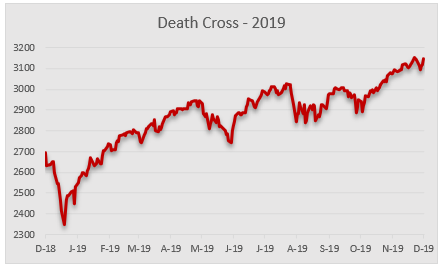
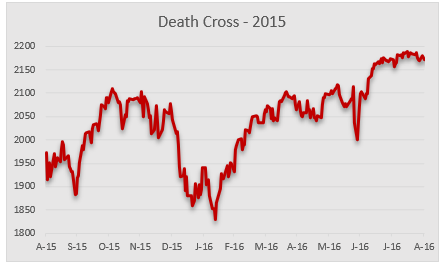
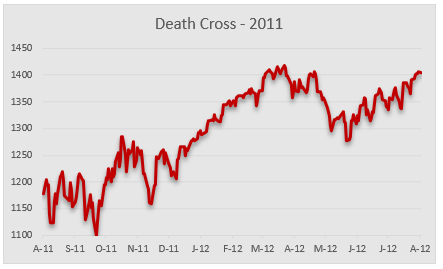
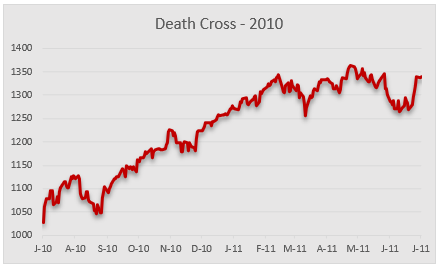
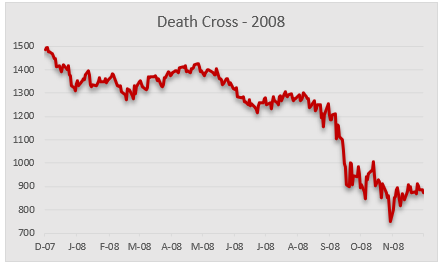
Hi Erik,
thank you for your report and research, with a very interesting perspective to look at prior Death Crosses.
I have a hard time believing this will be the “shortest bear market in history”. We still have not seen many reports on actual damages due to layoffs and lower consumption etc, and the virus is still young. I think we will have to handle this virus in some way this year at least. It seems dark pools and big money is buying dips, but I cannot join the optimism. I like your call that 2000 is a bottom that may appear in the coming weeks / months.
VIX is also hanging around more than prior examples, it seems to me. It has a hard time closing below 50. I think there will be a squeeze if things go down below 240 in SPY before April OpEx but I still have a hard time believing the optimism.
I simply have a bias at this point, and cannot shake it. Your perspective is excellent. I think your models deserve respect in this time if they call for a bit of caution. There will come a time for euphoria that the virus has passed, but perhaps not within short.
Joel